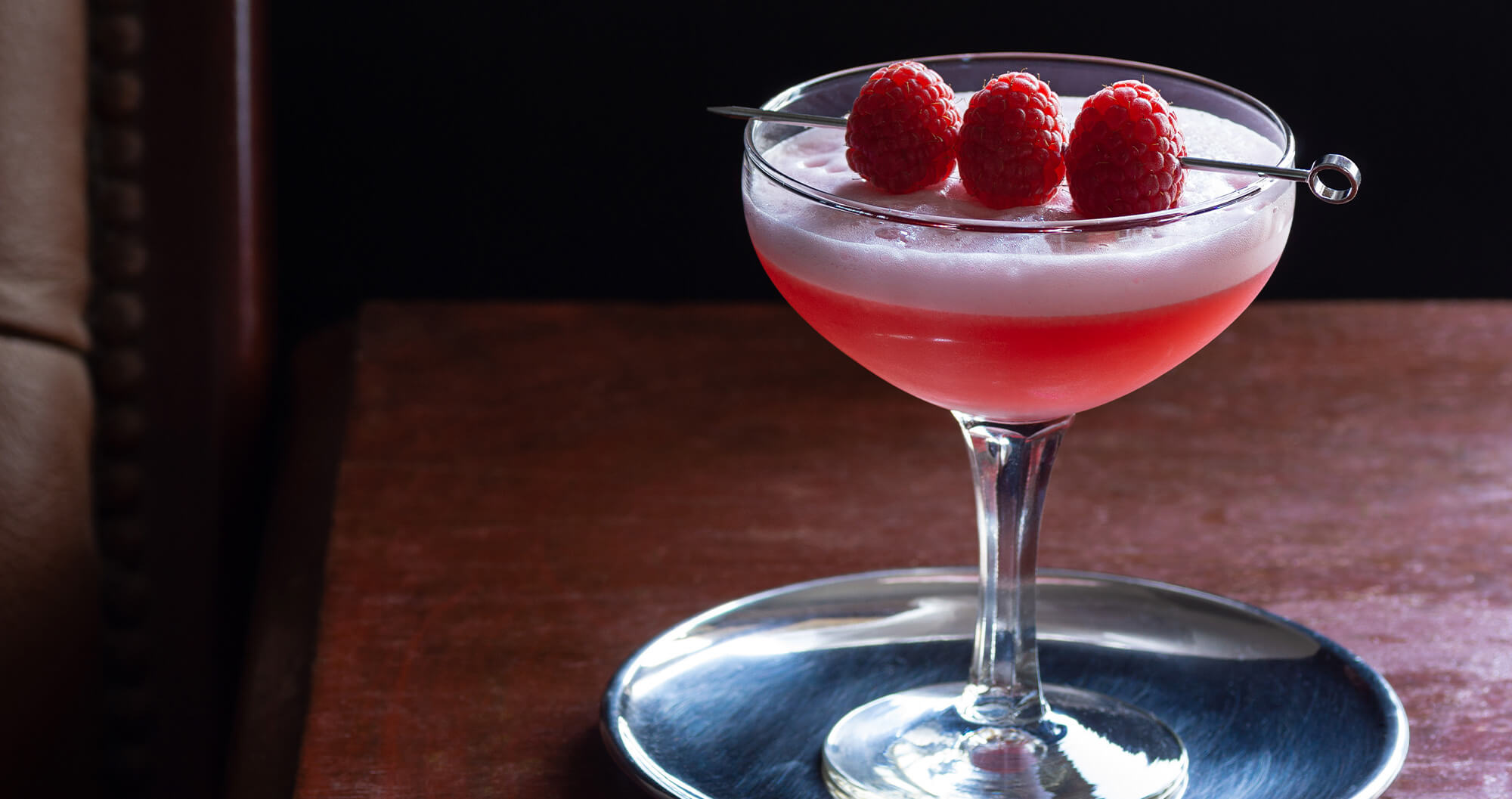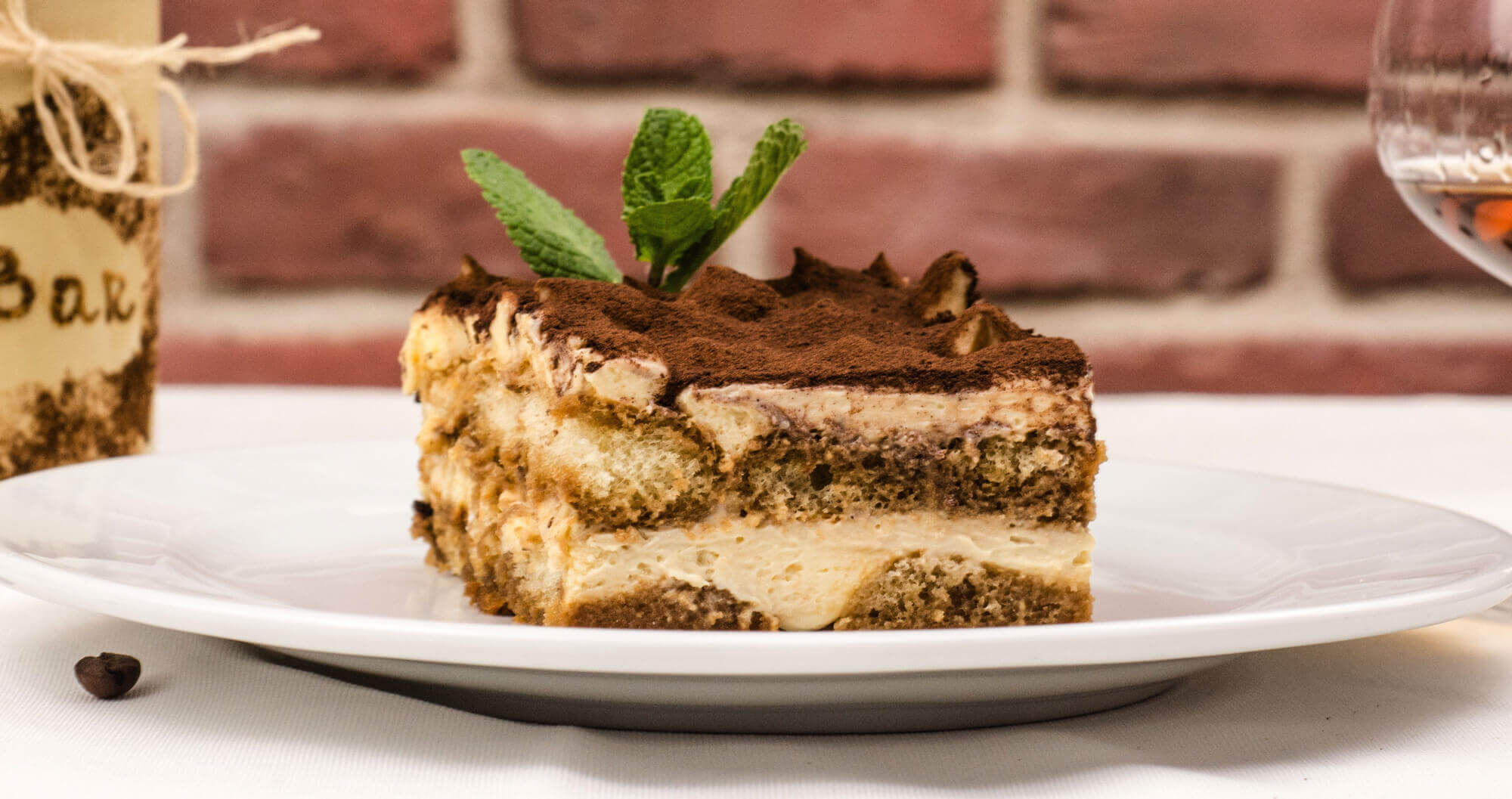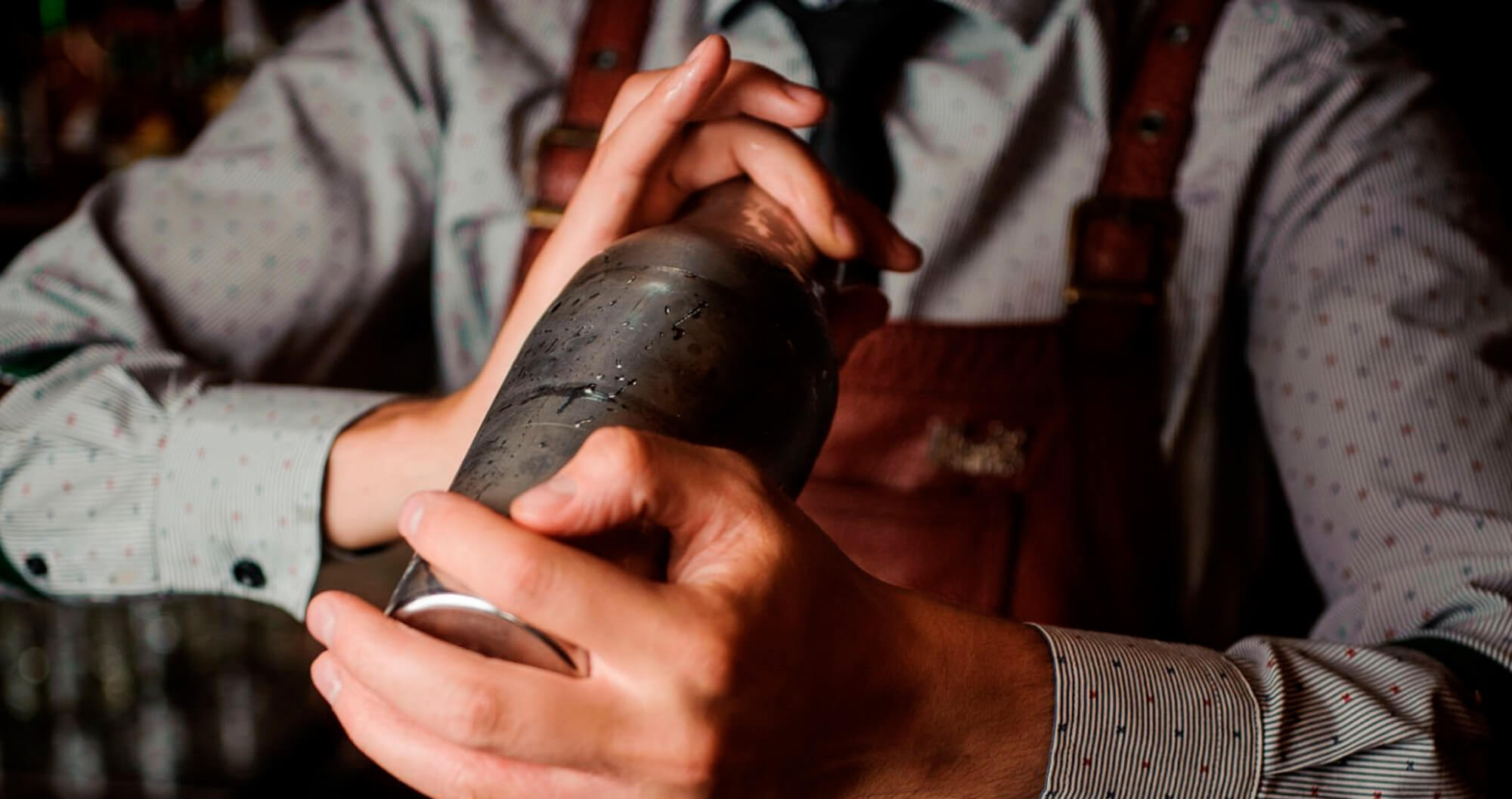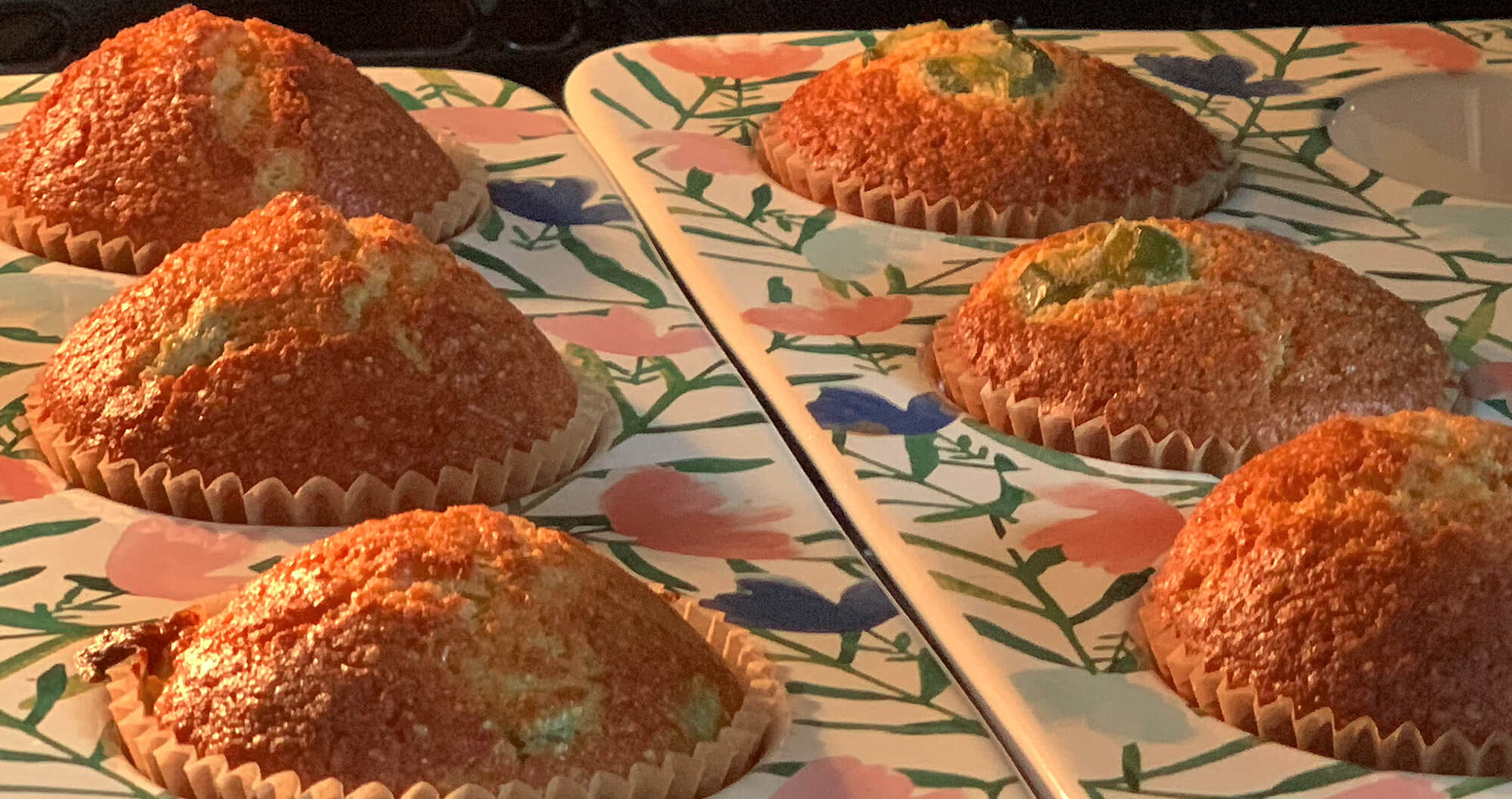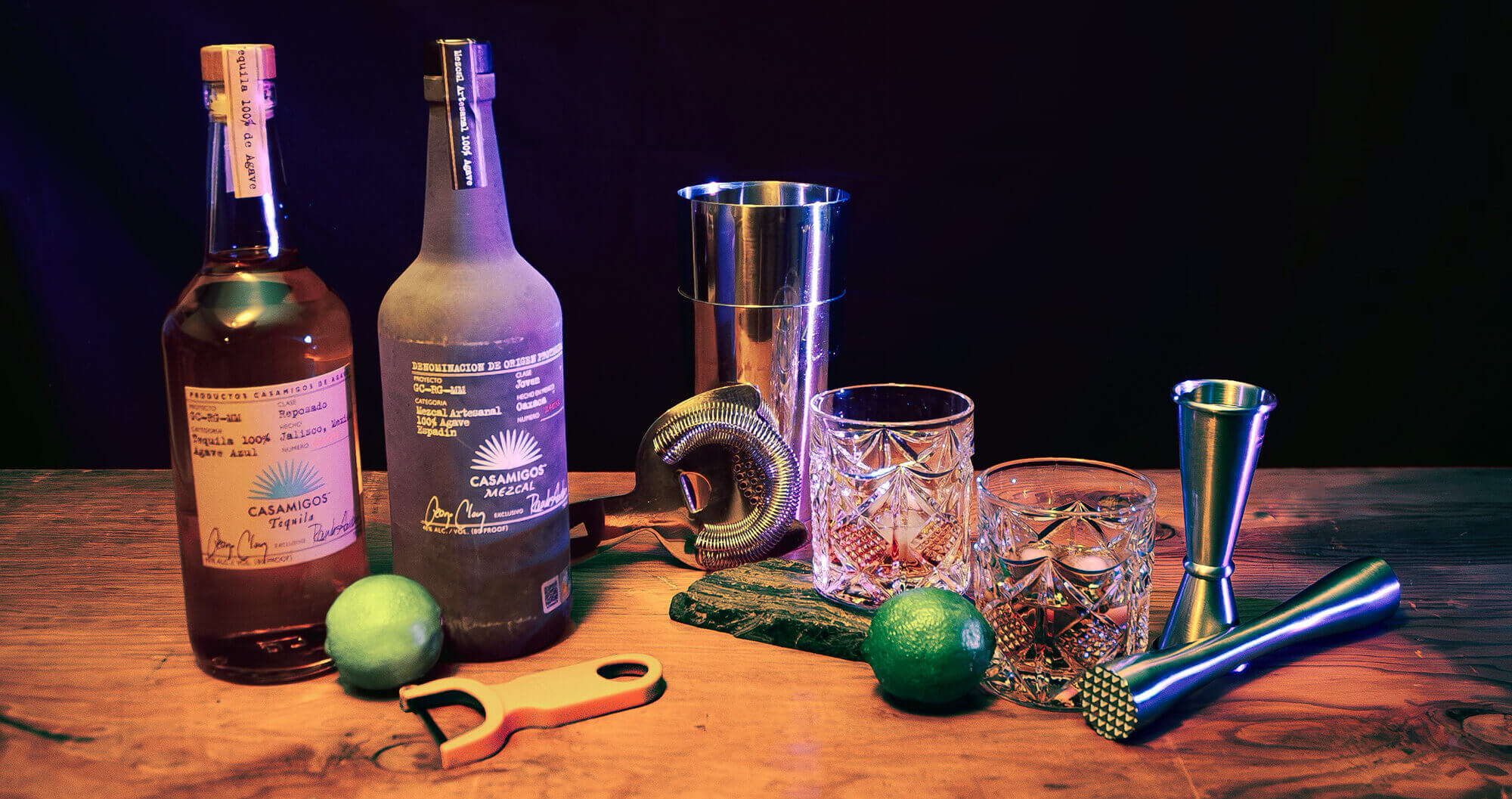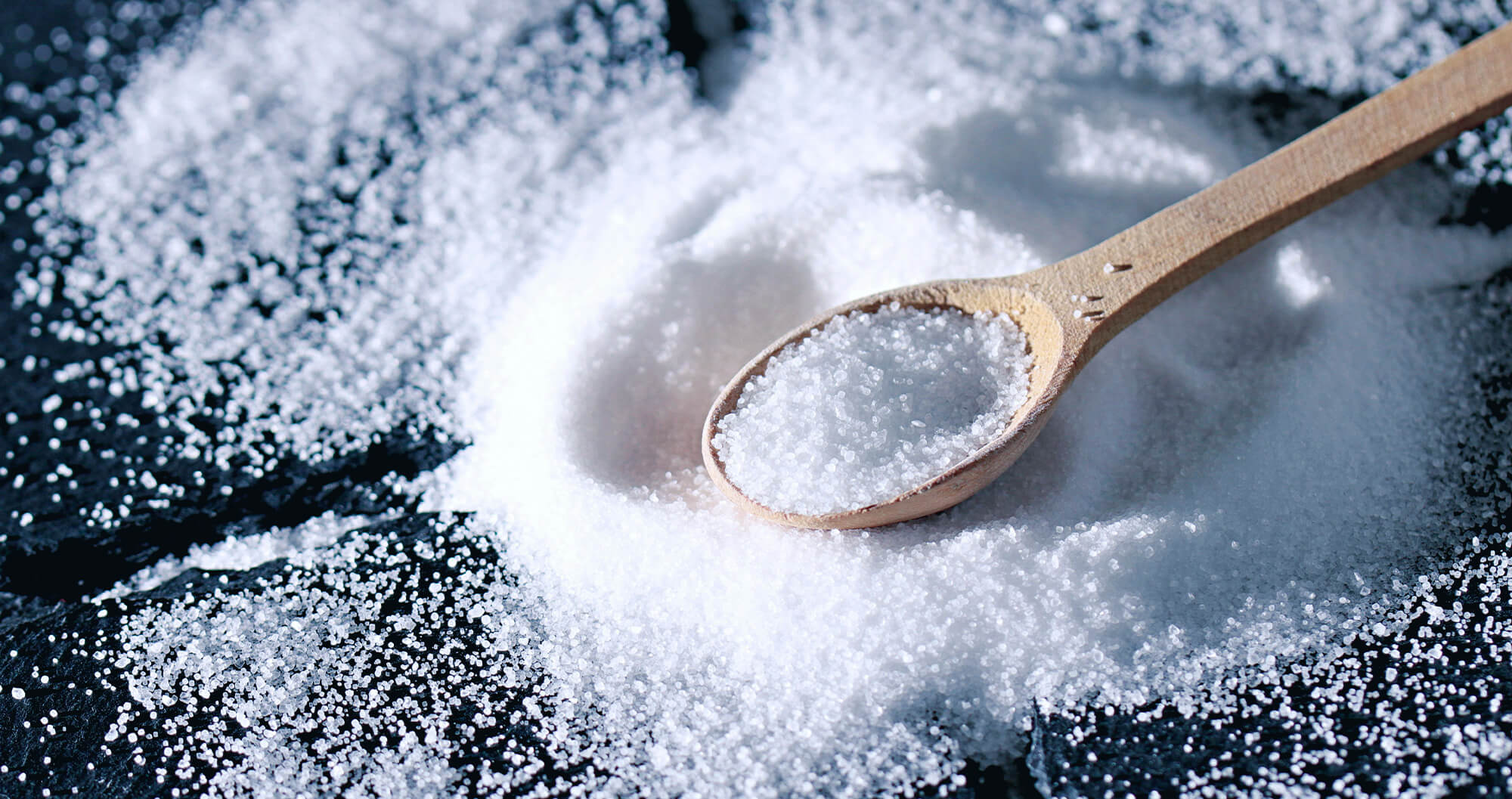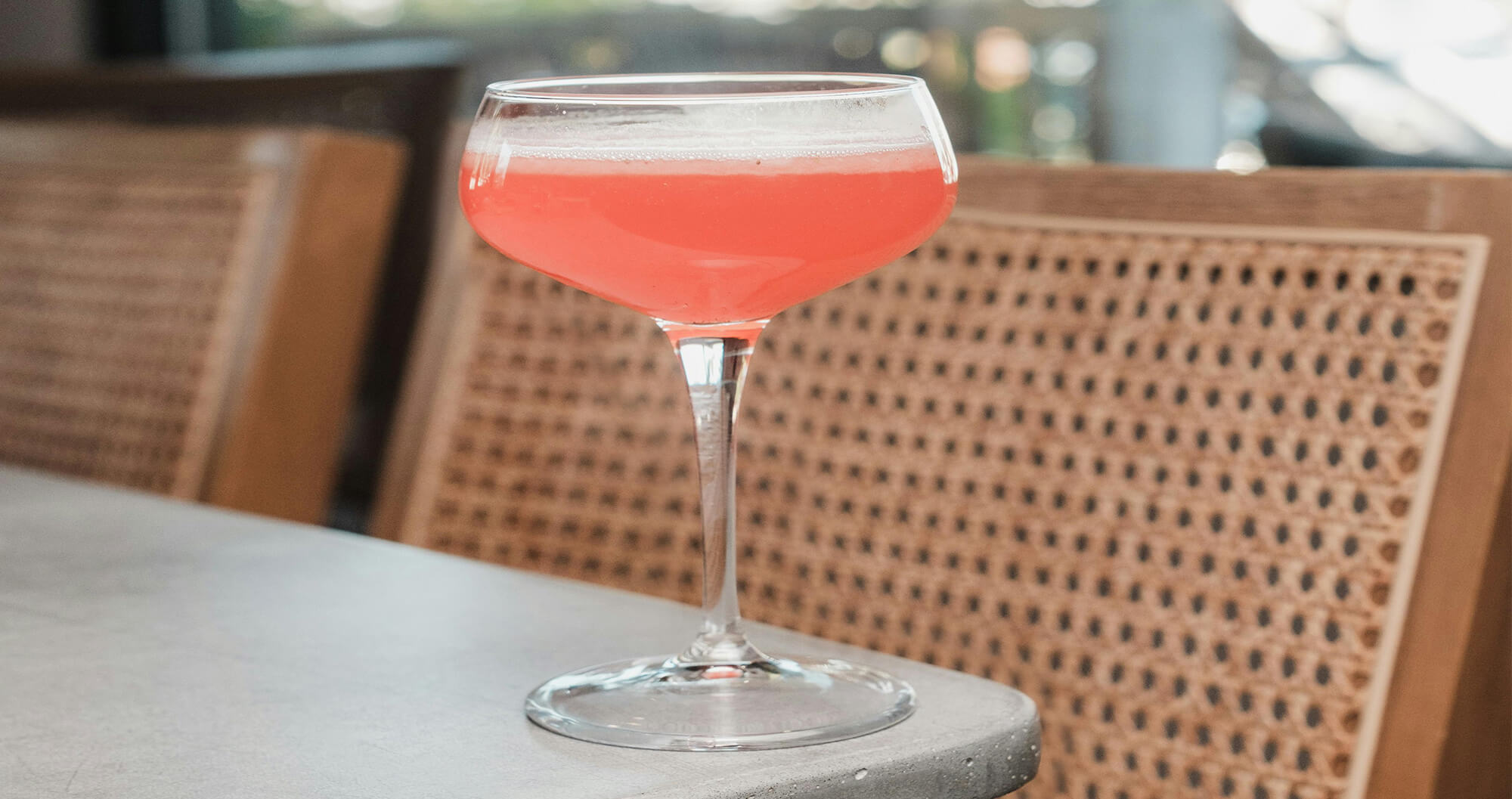A Brief History of Tiramisu
Tiramisu, which translates to “pick me up”/“cheer me up” in Italian, is believed to have originated in the Veneto region of Italy and does’t appear in any known recipe books or cooking articles before the 1970s. Although its official origin is not fully known, obituaries (of all things) for Ado Campeol (1928–2021) remark that Tiramisu made its first appearance in 1969 at his restaurant, Le Beccherie, in Treviso, Italy.
Some culinary legends even claim that Tiramisu was served as an aphrodisiac in the courtesan houses of Venice. While we can’t confirm the latter, we sure can say if you’ve got an…um, agenda…for a special someone, they sure won’t kick you out if you bring them some of our Tiramisu. 😉
Sabayon: the Secret Technique to Making a Game-Changing Tiramisu.
Unlike many online recipes that skip the sabayon step, our version has gone through years of refinement to ensure the richest, fluffiest & most flavor-packed filling. A sabayon is critical to those three things!
What is Sabayon?
Sabayon is a French dessert sauce traditionally made by whipping egg yolks, sugar, and white wine over gentile heat until the mixture turns luscious & airy, and takes on a light, lemony color (I know, I know…we love the French, around here).
The beauty of a sabayon lies within its versatility—white wine can be substituted with virtually any alcohol or flavoring of your choice. In our case, we use coffee liqueur.
What is Zabaglione?
Zabaglione is basically the Italian version of a sabayon sauce, made with Marsala wine. Unlike sabayon, zabaglione specifically uses sweet Marsala wine and is, um…less open to interpretation.
Why Don’t We Use Zabaglione in Tiramisu?
Well, we kinda do. As you can see, sabayon and zabaglione are extremely similar, but the version needed for this specific dessert is technically a sabayon sauce as we are not using the marsala wine specially called for in zabaglione.
Do I Really Need to Make a Sabayon for Tiramisu?
In our opinion, yes! We’ve been refining this perfect tiramisu recipe for years, and simply cannot replicate the same richness, fluffy texture, and depth of coffee flavor without a sabayon.
But…if you skip this sabayon, will your Tiramisu suck? Will it be ruined? Of course not. But…will your Tiramisu achieve that perfect blend of creamy, dreamy, and rich? Of course not.
How to Make Sabayon—Detailed Steps.
appx. cook time: 10Min.- Mise en place.
Gather a medium balloon whisk, small pot, a medium-sized heatproof metal bowl, a separate small bowl, 6 egg yolks, 1/2 cup of sugar, and 1/4 cup of liquid (in the case of our Tiramisu, 1/4 cup of coffee liqueur).
Tip: for a sweeter sabayon, increase the sugar to 1 cup; for more flavor, increase the liquid to 1/2 cup. The ingredients are forgiving, it’s the technique that matters! - Prep your double-boiler.
Add enough water to the pot so it rises about an inch up the sides. Then, place the bowl on top of the pot to quickly make sure: a) your bowl has a larger circumference than your pot;
b) it securely sits on top without sliding around; and
c) the bottom of the bowl does not touch the water (steam will gently cook your sabayon). Once your setup is good to go, remove the bowl and set aside, then bring the water to a boil. Once boiling, reduce heat to a simmer.
Tip: glass doesn’t transfer heat the same way as metal, so we strongly recommend metal bowls in double-boiler setups. Heatproof glass is acceptable but will take longer to cook and potentially not cook as evenly. - Prep the eggs.
Gently crack the eggs on the counter—this will help avoid any shells mixing with the cracked eggs. Then, open each cracked egg over the small bowl while using your (freshly cleaned) fingers as a “filter” to catch the egg yolks, allowing the whites to drain into the bowl. Once all of the egg white has fallen through your fingers, place the yolk into your heatproof metal bowl. Once all 6 yolks are separated, whisk them until well blended.
Tip: build the habbit of using a septate bowl for dividing egg yolks & whites; it acts as an insurance policy that helps us avoid having to start all over should a yolk break and seep into the whites, should we accidentally drop an entire egg into our separated yolks, etc. - Start cookin’!
Place the heatproof bowl of egg yolks over the simmering water and begin whisking continuously. Add half of your sugar and continue whisking until well blended, about 30 seconds—you’ll still see individual sugar granuals which is just fine. Add the remaining half of the sugar while continuously whisking until well-blended (another 30 seconds). Once all sugar is well-incorporated, slowly begin adding the liquid, a little at a time, while whisking continuously. All liquid should be added to the mixture within about 1 minute.
Tip: if you have one, use an electric mixer with whisk attachments to make sabayon. It’s not required but your arm will thank you. - Whisk, whisk, whisk (for about 8–10 minutes).
Don’t stop whisking! The sabayon mixture will gradually thicken and the sugar granuals will begin to disapper. You’re looking for it to expand in volume, lighten in color, and transform into a creamy consistency that’s thick enough to coat the back of a spoon.
Tip: often, I need to reduce the heat to low after a few minutes, so keep a close eye on the heat to be sure the eggs aren’t cooking faster than the sugar is dissolving. - Test for doneness.
Once you feel your sabayon has properly thickened and lightened in color, remove your whisk for a quick moment (when I say quick, I mean a quick moment) and allow the top of the mixture smooth out. Then, drag the whisk through it. If you can see the "lines" created by the whisk in the mixture, remove from the heat because you’re done!
What Internal Temperature to Cook Sabayon?
Remove the sabayon from the heat once its internal temperature is between 165°–170° F (74°–77° C). If you’re anything like me and want to be super precise when cooking, this is the way.
Sabayon Tips for Success:
- Never stop whisking while the mixture is on the heat—this prevents scrambling the eggs.
- If it looks like it’s cooking too fast, remove the bowl from the heat for a few seconds (but don’t stop whisking!), reduce the heat, then place back over the heat and continue cooking.
- If you start notice a smell that resembles cooked eggs, that means it’s cooking too fast. Follow the same procedure, above.
So there ya’ have it—restaurant-level sabayon sauce, right from your home kitchen!
Variations on a Classic Tiramisu
While the classic Tiramisu is a masterpiece, chefs and home bakers around the world have put their own spin on this Italian delight. Here are some popular variations:
- Berry tiramisu: reduce the amount of sugar in your sabayon and replace the coffee with berry juice for a fruity twist.
- Devil’s tiramisu: drizzle melted baking chocolate (or even chocolate syrup) on top of your ladyfingers, or, add cocoa powder into the cream filling. Or…both? 😳
- Chocolate chunk tiramisu: add mini-chocolate chips into the cream filling.
- Spicy tiramisu: add some chili heat to the espresso before you dip the ladyfingers, and add some cinnamon into the chocolate dusting on top for a delightful “mexican chocolate” variation.
- Vegan tiramisu: use dairy-free cream cheese & ladyfingers, and whip up some aquafaba instead of heavy cream. Skip the sabayon and add the sugar directly into the aquafaba, whip it up, assemble the cake, and allow it to rest for at least 12-hours to avoid a gritty texture.
Other Tiramisu Customizations: Easy Ways to Make It Your Own.
How to Make Tiramisu Safe for Pregnant People & Children.
Our recipe calls for decaf espresso/coffee, so that’s already the first step. Second, although the eggs should be pasteurized if you’ve fully cooked your sabayon, simply omitting the sabayon all-together is the easiest way to ensure your Tiramisu is safe for everyone, including being booze-free for the little ones. It won’t be as complex and rich but it will still be amazing!
How to Make Tiramisu Gluten‑Free.
That is super easy to accomplish, these days! Grab some gluten-free ladyfingers. We really love the gluten-free products from Schär, and find their ladyfingers do not get soggy or break apart when soaked in the espresso! 🎉
Also, be sure your whipping cream and marscapone do not have any gluten-based fillers or thickening agents, like “modified wheat starch” or “modified food starch.” Your best bet is to always look for the “certified gluten-free” label.
Help Whisks & Giggles remain ad-free by making a purchase after following links on our site. We may make a small commission at no cost to you—learn more about our affiliate links.
How to Make Tiramisu Lactose‑Free.
There are a few directions you can go when creating a lactose-free tiramisu.
- Use lactose-free ladyfingers: once again, Schär comes through for us with their gluten-and-lactose-free ladyfingers.
- Use lactose-free whipping cream & lactose-free cream cheese: the lactose-free whipping cream may give a bit of coconut flavor to your tiramisu, and the lactose-free cream cheese will give it a little more tangyness, but at least your tummy will remain tang‑free.
- Dairy-free marscapone and whipping cream: this one is a bit tricker, but possible. Essentially, we make a vegan tiramisu as mentioned, above.
How to Make Tiramisu Healthier.
It’s no secret Tiramisu is indulgent, but there are ways we can cut a few calories and fat from our Tiramisu recipe. Following one of these steps will reduce the richness and overall flavor of the cake, but it will still be delicious.
- Reduce the marscapone: using 12 oz. of cheese eliminates approximately 30 calories per serving.
- Reduce the marscapone and whipped cream: using 12 oz. each of cream and cheese eliminates approximately 55 calories per serving—you’ll just have a little less filling.
- Skip the liquor: omitting the coffee liquor all together eliminates approximately 14 calories per serving.
- Replace whipped cream with meringue: whipping the leftover egg whites into a soft peak meringue eliminates approximately 90 calories per serving.
- Skip the sabayon: omitting the sabayon will eliminate approximately 38 calories per serving.
Tip: if you do this, avoid a gritty texture by using powdered sugar instead of granulated sugar—add the powdered sugar directly to the cream in batches while you whip. Note: if you’re not measuring by weight (ounces), you’ll need slightly more powdered sugar than granulated sugar.
Why You’ll Love our Tiramisu Recipe
Tiramisu’s rich history, complex flavor profile, versatility (seriously, try the spicy version!), and ability to be paired with endless main courses make it a standout choice for any occasion.
And remember when cooking, it’s always that last 5% that pushes a dish from good to great, so do yourself a favor—whisk up that sabayon to give your friends & family the VIP treatment they deserve (or just yourself, we don’t judge).

 By Jen Gadus | Published December 10, 2024
Intermediate
By Jen Gadus | Published December 10, 2024
Intermediate






